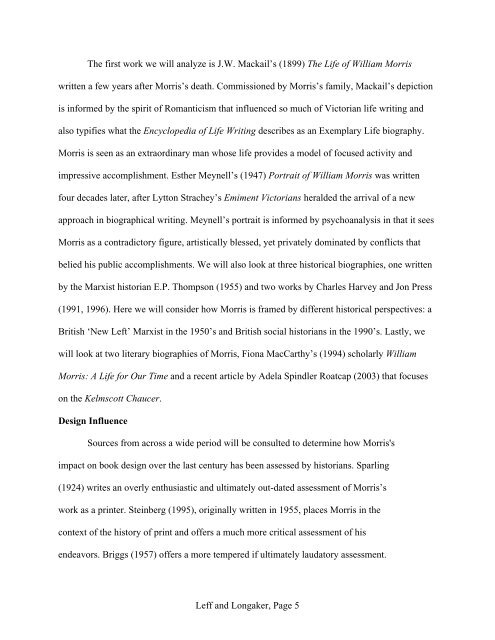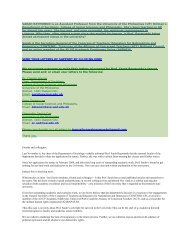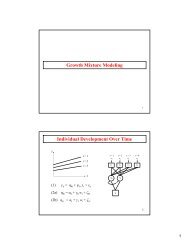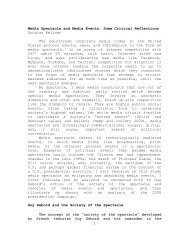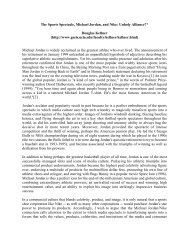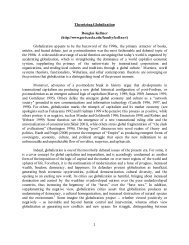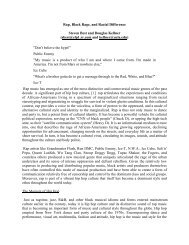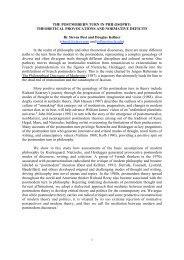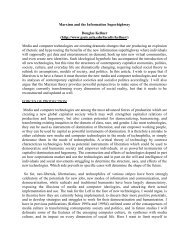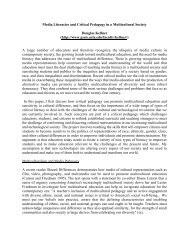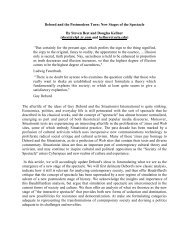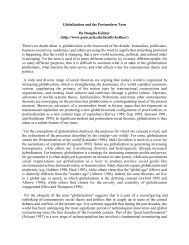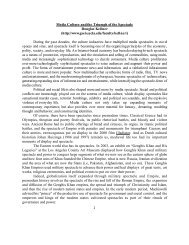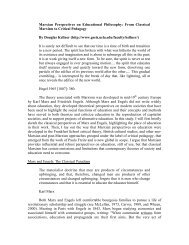Rachel Leff and Rachel Longaker IS281 Professor Maack ... - Ucla
Rachel Leff and Rachel Longaker IS281 Professor Maack ... - Ucla
Rachel Leff and Rachel Longaker IS281 Professor Maack ... - Ucla
Create successful ePaper yourself
Turn your PDF publications into a flip-book with our unique Google optimized e-Paper software.
The first work we will analyze is J.W. Mackail’s (1899) The Life of William Morris<br />
written a few years after Morris’s death. Commissioned by Morris’s family, Mackail’s depiction<br />
is informed by the spirit of Romanticism that influenced so much of Victorian life writing <strong>and</strong><br />
also typifies what the Encyclopedia of Life Writing describes as an Exemplary Life biography.<br />
Morris is seen as an extraordinary man whose life provides a model of focused activity <strong>and</strong><br />
impressive accomplishment. Esther Meynell’s (1947) Portrait of William Morris was written<br />
four decades later, after Lytton Strachey’s Emiment Victorians heralded the arrival of a new<br />
approach in biographical writing. Meynell’s portrait is informed by psychoanalysis in that it sees<br />
Morris as a contradictory figure, artistically blessed, yet privately dominated by conflicts that<br />
belied his public accomplishments. We will also look at three historical biographies, one written<br />
by the Marxist historian E.P. Thompson (1955) <strong>and</strong> two works by Charles Harvey <strong>and</strong> Jon Press<br />
(1991, 1996). Here we will consider how Morris is framed by different historical perspectives: a<br />
British ‘New Left’ Marxist in the 1950’s <strong>and</strong> British social historians in the 1990’s. Lastly, we<br />
will look at two literary biographies of Morris, Fiona MacCarthy’s (1994) scholarly William<br />
Morris: A Life for Our Time <strong>and</strong> a recent article by Adela Spindler Roatcap (2003) that focuses<br />
on the Kelmscott Chaucer.<br />
Design Influence<br />
Sources from across a wide period will be consulted to determine how Morris's<br />
impact on book design over the last century has been assessed by historians. Sparling<br />
(1924) writes an overly enthusiastic <strong>and</strong> ultimately out-dated assessment of Morris’s<br />
work as a printer. Steinberg (1995), originally written in 1955, places Morris in the<br />
context of the history of print <strong>and</strong> offers a much more critical assessment of his<br />
endeavors. Briggs (1957) offers a more tempered if ultimately laudatory assessment.<br />
<strong>Leff</strong> <strong>and</strong> <strong>Longaker</strong>, Page 5


